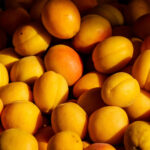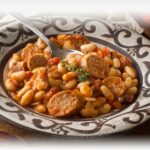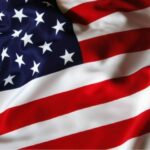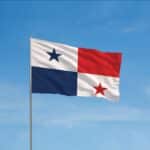Martyrs’ Day in Panama, observed on January 9 every year, is a national day of mourning commemorating the anti-American riots over the sovereignty of the Panama Canal Zone on January 9, 1964. Students were slain after a clash between Canal Zone Police officers and locals when a Panamanian flag was vandalized, which sparked the unrest. After Canal Zone police succumbed to the ensuing violence, U.S. Army soldiers had to intervene. Approximately 22 Panamanians and four American soldiers were killed after three days of warfare. According to the Torrijos-Carter Treaties of 1977, the United States decided to hand over the authority of the Canal Zone to Panama as a result of this incident.
History of Panama's Martyrs' Day
The circumstances that led to the celebration of Martyrs’ Day in Panama were sparked by some Panamanians’ resentment over the Canal Zone’s ostensibly permanent cession to the United States under the terms of the Hay-Bunau-Varilla Treaty. As a result, the Canal Zone was annexed by the United States, and those who lived there were known as Zonians.President John F. Kennedy of the United States agreed to fly the flags of Panama and the United States simultaneously at all non-military locations in the Canal Zone in January 1963. Sadly, though, President Kennedy was slain before the directives were put into action. A month after President Kennedy’s death, the governor of the Panama Canal Zone, Robert J. Fleming, Jr., issued an executive order that limited the president’s directive. As a result, neither the American nor the Panamanian flags were to be flown in front of schools, police stations, post offices, or other public buildings in the Canal Zone. Many Zonians were incensed by the governor’s order because they saw it as a surrender of American control over the Canal Zone.Disgruntled and furious Zonians retaliated by flying the American flag everywhere they could. After the Balboa High School administration removed the first U.S. flag erected there, the students boycotted classes, raised a second flag, and set up guards to stop its removal. The majority of Zonian adults backed the protesting students. Because he underestimated how volatile the situation would be, Governor Fleming left for a meeting in Washington, D.C., on the afternoon of January 9, 1964. He was traveling from the Caribbean to the United States when the explosive situation caught up with him.
Panama's Martyrs' Day timeline
Panama becomes a sovereign state, gaining independence from Colombia.
Kennedy, the 35th President of the United States, is born.
President Kennedy is assassinated on November 22.
Protests over the issue of flying the United States flag ensue, thereby leading to violence in the Panama Canal Zone.
Panama's Martyrs' Day FAQs
Do they speak English in Panama?
English is taught in grade schools, private schools, and bilingual schools. However, recent findings show only 8% of the population can speak English. In Panama City, where there is a greater need in business for employees to be able to converse bilingually, there is a higher English-speaking population.
Is crime high in Panama?
Panama is the safest country in Central America and an important trade zone due to its namesake canal.
Who controls the Panama Canal today?
Since 1999, ownership and control of the Panama Canal have returned to the Republic of Panama.
How to Observe Panama's Martyrs' Day
-
Fly the Panamanian flag
You can fly the Panamanian flag in respectful memory of the Panamanians who died on January 9, 1964. This is a great way to remember them.
-
Visit Balboa High School
It would be a great idea to visit the location where the protests originated. This will be a good way to visualize the entire incident
-
Join the conversation online
Share what you know about Martyrs’ Day online with the #PanamaMartyrsDay hashtag. Through this, more people will learn about the day.
5 Interesting Facts About Panama
-
Panama has two independence days
Panama has two independence days, one commemorates its independence from Spain, and a second commemorates its independence from Colombia.
-
The world’s oldest railroad
The world’s oldest operating railroad is in Panama.
-
It’s fairly safe from hurricanes
Panama is rarely ever affected by hurricanes.
-
It is home to the Panama Canal
The Panama Canal in Panama is one of the Seven Wonders of the World.
-
The capital city accommodates a rainforest
Panama City is the only one in the world with a rainforest within city limits.
Why Panama's Martyrs' Day is Important
-
It is a cultural holiday
Martyrs’ Day in Panama is a cultural holiday, and as such, it is a day for citizens at home and abroad to connect to their roots. Your sense of cultural identification strengthens when you share special occasions like this with friends and family.
-
It’s a reason to visit Panama
The holiday, though not a flamboyant occasion of celebration, is still a good enough reason for one to visit Panama. Panama is a narrow little country packed with culture, tropical beaches, history, wildlife, and all you could wish for if you are looking for an adventurous holiday.
-
It's an opportunity to learn more about history
Martyrs’ Day in Panama is an opportunity to research and learn more about Panamanian and American history. By analyzing how the past has affected relationships between societies and individuals on a local, national, and global scale, studying history aids us in understanding and addressing challenges and conundrums.
Panama's Martyrs' Day dates
| Year | Date | Day |
|---|---|---|
| 2023 | January 9 | Monday |
| 2024 | January 9 | Tuesday |
| 2025 | January 9 | Thursday |
| 2026 | January 9 | Friday |
| 2027 | January 9 | Saturday |




















